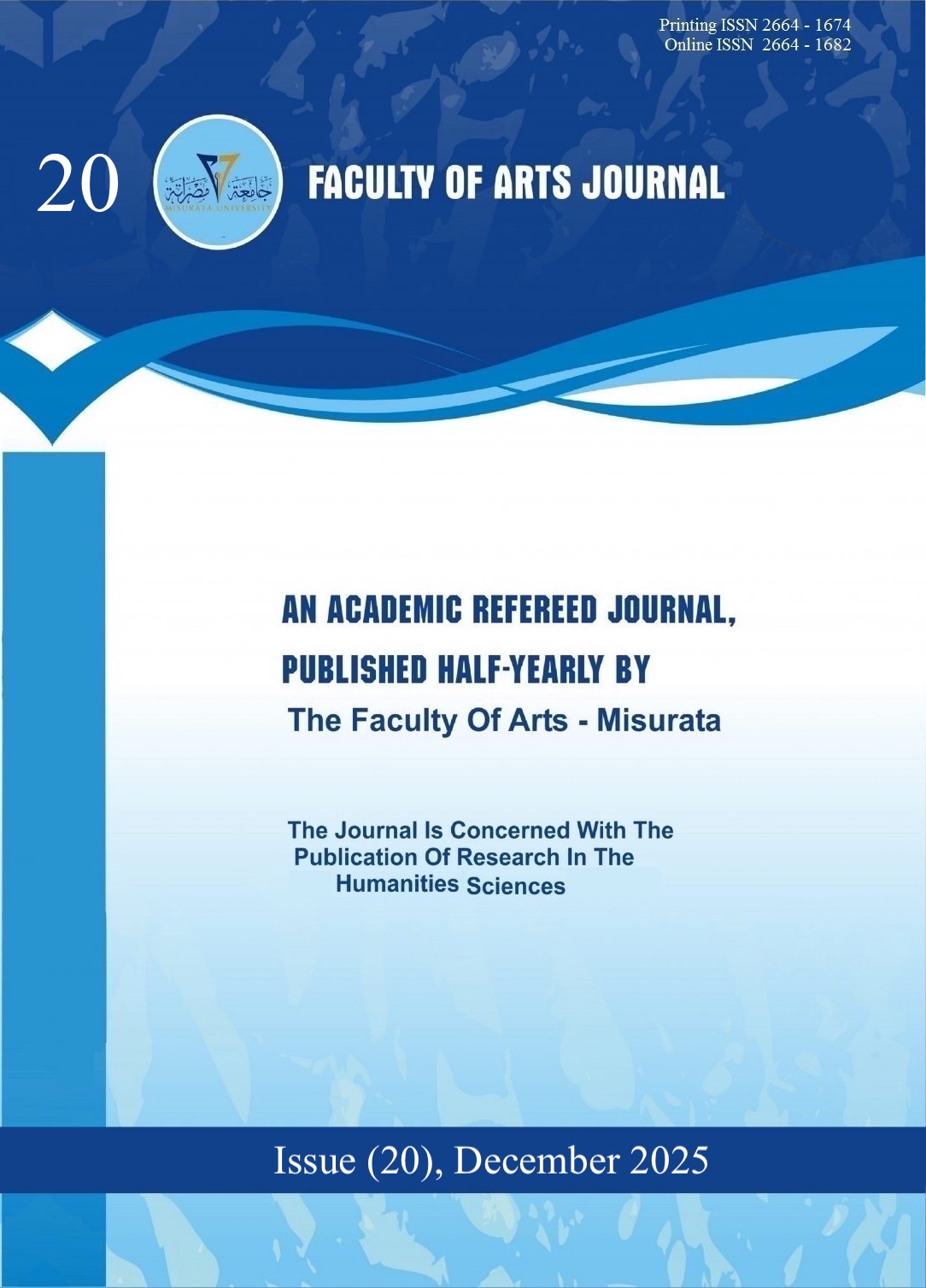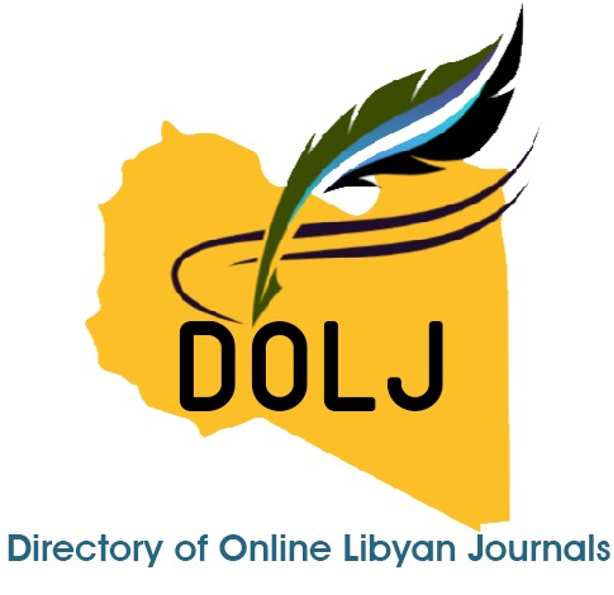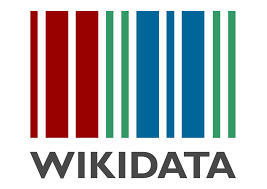Textual Interaction in Ali Al-Fazzani's Poetry
DOI:
https://doi.org/10.36602/faj.2025.n20.25Keywords:
Intertextuality, Textual interaction, Cultural references, AlienationAbstract
This research examines the cultural references that shaped the poetry of the Libyan poet Ali Al-Fazzani in his first collection, which combines four books: The Journey of Loss, The Illuminating Journeys of Sorrow, Migrant Poems, and Death on the Minaret. The study highlights three central concerns in this collection: the poet’s inner struggle with loss and alienation, the Arab cause marked by oppression and occupation, and the universal quest for freedom and emancipation.To articulate these personal, national, and humanitarian dimensions, Al-Fazzani draws on diverse cultural tributaries, including religious, historical, literary, and mythological sources. He re-reads these texts through his own vision, selecting and reshaping them to express his concerns and to project intellectual and future-oriented perspectives. Intertextuality, therefore, becomes the lens through which the poet negotiates his relationship with reality and the issues he seeks to convey.
The significance of this research lies in revealing how intertextuality functions as a creative mechanism in Al-Fazzani’s poetry. It enables dialogue with prior texts, enriches meaning, and deepens the structure of the poem. Given that Al-Fazzani’s works are saturated with migrant texts that interact within his verse, they provide a rich field for studying textual interaction and its role in shaping contemporary Arabic poetic creativity
References
أبو زيد، سامي يوسف. (2012). الأدب الأندلسي. دار المسيرة للنشر والتوزيع والطباعة.
إبراهيم، عبد الله. (1990). المتخيل السردي: مقاربات نقدية في التناص والرؤى والدلالة. المركز الثقافي العربي.
بن عريفة، الطاهر. (2009). التعريف بالأدب الليبي. دار الكتب الوطنية.
بنيس، محمد. (1979). ظاهرة الشعر المعاصر في المغرب. دار العودة.
تودوروف، تزفيتان. (1987). الشعرية (ترجمة: شكري المبخوت ورجاء بن سلامة). دار توبقال للنشر.
تودوروف، تزفيتان. (1996). ميخائيل باختين: المبدأ الحواري (فخري صالح، مترجم، ط. 2). المؤسسة العربية للنشر.
حافظ، صبري. (1996). أفق الخطاب النقدي. دار شرقيات للنشر والتوزيع.
الزعبي، أحمد. (2000). التناص: نظرياً وتطبيقياً. مؤسسة عمون للنشر والتوزيع.
زيدان، سليمان حسن. (2018). المؤثرات التراثية في الإبداع الشعري في ليبيا. دار الكتب الوطنية.
السياب، بدر شاكر. (1971). ديوان بدر شاكر السياب. دار العودة.
الشابي، أبو القاسم. (1955). ديوان أبي القاسم الشابي: أغاني الحياة. دار الكتب الشرقية.
شوقي، أحمد. (2004). ديوان أحمد شوقي. دار صادر.
الصكر، حاتم. (1998). ترويض النص. الهيئة المصرية العامة للكتاب.
ضيف، شوقي. (1966). تاريخ الأدب العربي: العصر العباسي الأول (ط. 8). دار المعارف.
الغذامي، عبد الله. (2006). الخطيئة والتكفير: من البنيوية إلى التشريحية (ط. 6). المركز الثقافي العربي.
الفزاني، علي. (1983). الأعمال الشعرية الكاملة: المجموعة الأولى (ط. 4). المنشأة العامة للنشر والتوزيع.
فيصل، نهلة. (2010). التفاعل النصي: التناصية النظرية والمنهج. الهيئة العامة لقصور الثقافة.
قباني، نزار. (1990). الرسم بالكلمات (ط. 19). منشورات نزار قباني.
كرستيفا، جوليا. (1997). علم النص (فريد الزاهي، مترجم، ط. 2). دار توبقال للنشر.
لجنة جمع التراث. (1993). ديوان الشعر الشعبي (ط. 3). منشورات جامعة قاريونس.
محفوظ، نجيب. (د.ت.). اللص والكلاب. مكتبة مصر.
المعداوي، أحمد. (1993). أزمة الحداثة في الشعر العربي الحديث. منشورات دار الآفاق الجديدة.
المعري، أبو العلاء. (1987). شرح ديوان سقط الزند (شرح وتعليق ن. رضا). مكتبة الحياة.
مفتاح، محمد. (1986). تحليل الخطاب الشعري: استراتيجية التناص (ط. 2). المركز الثقافي العربي.
مليطان، عبد الله. (2001). معجم الشعراء الليبيين: شعراء صدرت لهم دواوين. دار الكتب الوطنية.
نصر، قريرة زرقون. (2004). الحركة الشعرية في ليبيا في العصر الحديث. دار الكتاب الجديدة المتحدة.
هيكل، أحمد. (1994). الأدب الأندلسي: من الفتح إلى سقوط الخلافة (ط. 11). دار المعارف.
يقطين، سعيد. (2001). انفتاح النص الروائي (ط. 2). المركز الثقافي العربي.
Downloads
Published
How to Cite
Issue
Section
License
Copyright (c) 2025 إسماعيل حسين فتاتيت

This work is licensed under a Creative Commons Attribution 4.0 International License.
All works published in this journal are licensed under the Creative Commons Attribution 4.0 International License (CC BY 4.0), which permits use, sharing, adaptation, and redistribution for any purpose, including commercial ones, provided that proper credit is given to the original author and source, a link to the license is provided, and any changes made are indicated.

















